Subdivision rule rewrite splinters Enfield Board
Reporting, analysis and commentary by Robert Lynch; January 16, 2024
“It’s very NIMBY to say that people can’t come here because they might affect our water.”
Enfield Supervisor Stephanie Redmond, Town Board meeting, January 10th.
“I think first and foremost we have to protect the interests of the people who live here.”
Enfield Councilperson Robert Lynch, same meeting.
****
The shadow of Breezy Meadows hung over the Enfield Town Board near the end of its first meeting in January. For this writer and Town Councilperson, it certainly did; for Town Supervisor Stephanie Redmond, maybe not so much.
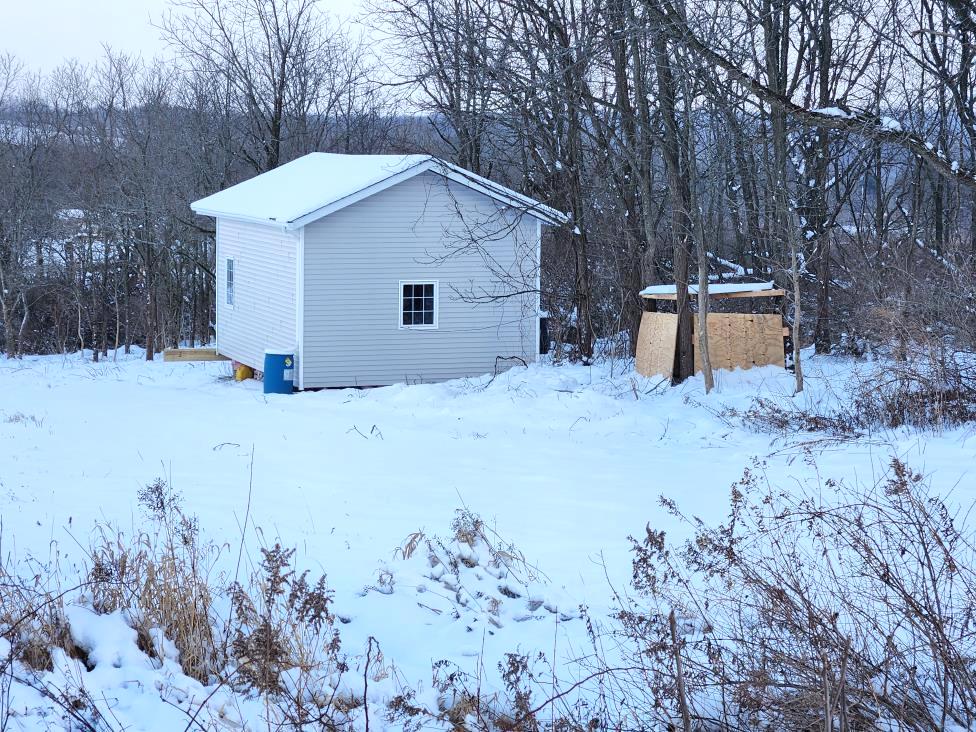
For me, New York Land and Lakes Development’s new 33-lot, 337-acre large-lot housing project—the one straddling Tucker Road and reaching as far west as Podunk and as far east as Halseyville—underlay everything I placed before my fellow Town Board members that night as we began our review of a 39-page draft of Subdivision Regulations, revisions handed up last September by Enfield’s Planning Board.
For several months, Supervisor Redmond has urged us to start review of the document, only to have our labors kicked down the road to a later meeting, often by me. Frankly, I wanted some time to put my own thoughts together and also to invite newly-elected Board member Melissa Millspaugh to join in the discussions. From impressions I drew at our January 10th session, not many others on our Board had given the draft regulations as much thought as I had. I’d thought about them plenty.
To me, subdivision regulations serve as the tool that towns can use to force developers to behave. And in my opinion, Land and Lakes has not behaved well.
“Are there any changes to the definitions?” Supervisor Redmond asked us. It was the “definitions” section that she’d wanted us to study first. “I felt like there wasn’t anything in particular that I saw that was inappropriate or should have been explained more. But I’d be open to other ideas,” Redmond said.
I had ideas. Indeed, I’d scripted them in red. I’d later hand them to Redmond and to others on the Town Board.
“We can treat this two ways,” I advised my fellow lawmakers. “We can treat this as just an editorial exercise… or we can take this as an opportunity, an opportunity to really answer some of the problems that I feel were raised by Breezy Meadows and raised in a way that brought me concern, which I have expressed previously.”
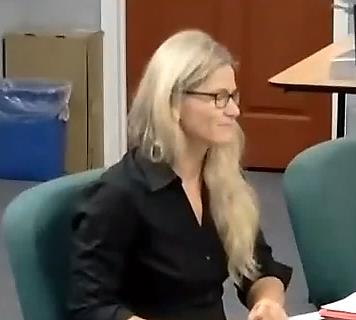
They were concerns I’d been vocal about ever since the Land and Lakes project first came to light in December 2022 and continued thereafter as resident complaints arose at Planning Board meetings during the early months of last year. That review culminated in June with the Planning Board having given the developer pretty much everything it had asked for.
“Do we take Major Subdivisions and chop them into two categories?” I asked my Town Board colleagues this recent January night. “Do we involve the Town (Board) as the lead agency in those larger categories? That’s a separate question. And the third question is whether we embody within our Subdivision Regulations what can basically be described as the Right to Water.”
A “Right to Water,” my innovative request that would establish a resident’s right to plentiful ground water. It’s my baby. I conceived it. I campaigned for re-election on it. According to last year’s Planning Board banter, it may be the first-of-its-kind in New York State. My initiative predominated the remainder of our Board’s much-longer-than-expected, 48-minute discussion. And what that discussion revealed, rather unexpectedly, was the sharp ideological divide between Supervisor Redmond and myself; differences not just over whether ground water rights deserve regulatory protection, but also, perhaps more importantly, over whom we in elected Enfield Town Government should answer to first.
“Here’s my concern,” responded Redmond. “With Climate Change, things are going to change drastically as far as water resources go. We could experience heavy floods. We can experience extreme drought. That can change annually. And it seems unfair—(rather) un-uniform to use that as a measure when it can be the one year it floods, there’s plenty of water, and they can do 20 different subdivisions; and the next year, two years down the road, there’s a drought; there’s no water anywhere, you can’t subdivide five parcels and get adequate water.”
A fair point, perhaps. But I’ve got an answer. My draft provision puts the developer on the hook to plan for the worst-case scenario.
Here’s the core requirement I wrote as part of the five-paragraph “Right to Water” provision I’d proposed to add to Enfield’s Subdivision Regulations. That key paragraph states:
“[A]s a condition to the sale of any proposed subdivision lot, the subdivider/seller shall certify to the prospective purchaser in writing prior to closing on that parcel’s sale, absent the existence of any readily-available public water supply, that the lot to be sold holds sufficient groundwater production capacity to support the use intended, and that in no instance it holds less capacity than that required to support the needs of a three-bedroom, single-family residence, a capacity standard based on the established or generally-accepted standards employed by the Tompkins County Health Department at the time of sale.”
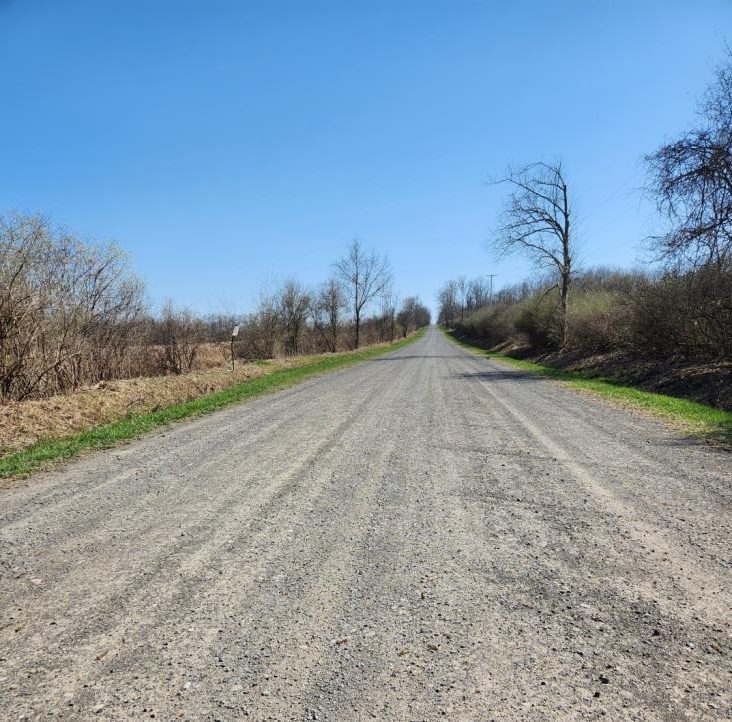
Straightforward, I would argue, and also consumer-friendly. I would not apply the requirement to minor subdivisions where only a handful of lots are being created. Nor would I apply it to land sales where the buyer’s intent is to farm. The buyer could still roll the dice and waive the water requirement when purchasing the land. But the seller, the subdivision developer, could not waive the requirement absent the buyer’s consent.
“This is just a starting point,” I advised my Board colleagues. “And it’s a question if we want to think expansively with regards to these subdivision regulations. If we don’t, then we don’t.”
I explained the problem: “The problem is that New York Land and Lakes made no representations of water,” I said. “They said it’s a buildable lot. When pressed at the Planning Board meeting as to what a ‘buildable lot’ is, they said it will meet the County sewage disposal requirements. There was no guarantee of water. And that is a concern.”
New York Land and Lakes Development began marketing its Breezy Meadows subdivision in late-September. Nearly all of the 33 lots, big and small, have already been snapped up, according to Town Clerk Mary Cornell, who receives change-of-ownership forms for tax purposes. Clerk Cornell reports most of the purchasers provide downstate or New Jersey addresses.
At times, last spring, I waged a one-man fight before the Enfield Planning Board to force New York Land and Lakes to work harder in exchange for the millions it made. First, I pleaded with the Planning Board to require the developer undertake a detailed Environmental Impact Statement complete with a water study so as to scientifically affirm the company’s own assertion that its new lots would not deplete neighborhood wells. When that attempt failed, I urged planners append to their approval a water sufficiency clause similar to what I’d placed before the Town Board on Wednesday. The Planning Board thought the requirement unnecessary.
Planners rejected that latter recommendation, in part, on grounds that my requirement might burden developers to drill test-wells to demonstrate compliance, and to drill them in places not wanted. “Maybe I want to put my house where you stuck that stupid well,” Planning Board member Ann Chaffee famously remarked at the final meeting, her placing words into the mouth of a lot’s prospective purchaser.
But Breezy Meadows is a done-deal. The land’s been sold. The people will come. The homes will go up. The well drillers will drill down. But what about our future? At this point, that’s what worries me. And Supervisor Redmond’s comments at our January meeting did nothing to quell my anxiety.
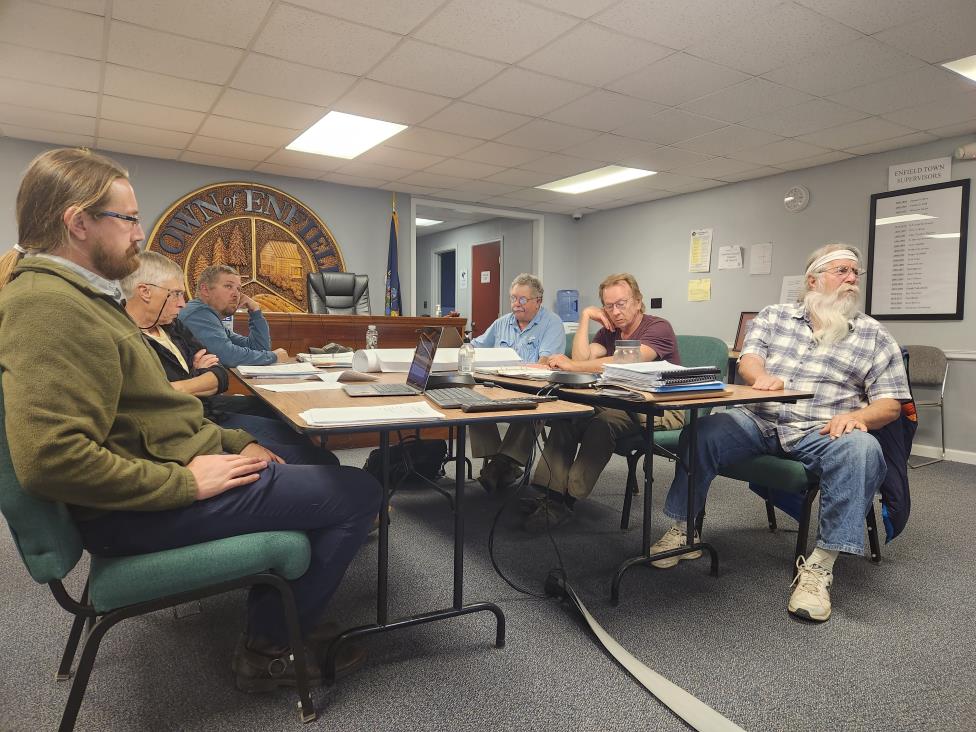
“We very much are going to, in my opinion, experience severe development pressure as people are climate refugees and come here,” Redmond said, cautioning the rest of us not to erect regulatory barriers that would discourage her predicted flood of new arrivals from coming here.
“We have to expect that, our climate change reality” Redmond told us that night. “We have to expect that coastal cities with billions of people are going to go underwater, and they’re going to need a place to live, and they’re going to come here because we have fresh water resources that we need to really protect. So I’m on board that we need to protect it. But I also understand that we have to accommodate places for people to live.”
Quite honestly, I do not live in Stephanie Redmond’s reality. I do not envision parched, thirsty “climate refugees” streaming west across Sheffield Road into Enfield like Venezuelan migrants swimming the Rio Grande into Greg Abbott’s Texas. And if those flood-displaced masses actually do eventually migrate, don’t you think they’ll first go to someplace where there’s public water? I doubt they’ll head toward the Enfield shale where wells yield maybe two gallons per minute at best.
No, more likely a good many urban emigres to the likes of Breezy Meadows will be 21st Century Eddie Albert’s and Eva Gabor’s who envision some sort of idyllic “Green Acres” in northwestern Enfield. Good luck with that. And when they finally do get here and figure out what they’ve bought, let’s hope they keep the water-wagon driver on speed-dial.
The damage to be done here will likely be the damage done to those who now call Enfield their home.
“The problem that I have been confronting the past year in dealing with Breezy Meadows are people who have been telling me, ‘We live here in Enfield already, and we have those wells down in the shale, and we’re worried that all those homes in Breezy Meadows are going to drain our well dry,’” I told the Town Board that night.
“And the neighbors, the people who aren’t in Breezy Meadows, a lot of them are scared,” I said. “A lot of them say, ‘I’m not going to build anywhere near here because I don’t want to have no water.’”
“In all honesty, none of us are guaranteed water,” Redmond responded. And if that’s the case, “There’s no development at all,” she concluded. “That’s the reality that we’re facing. Climate Change is real. It’s very much going to affect our area. And what way that goes, we don’t know.”
“I’m open to looking at it on a much broader sense, I am,” Councilperson Jude Lemke interjected. “But we need help. It’s not an area we know a lot about.” Both Lemke and Redmond proposed we call in experts to address the Town Board on best practices and water conservation. They asked for presentations. Lemke wondered if someone at Cornell could help.
“It seems to me that tackling this without some guidance from people who know a lot more about this than our Board does would be foolish,” Lemke concluded.
But talking a problem to death can kill it. Presentations and studies can also redirect the whole process and dead-end what my “Right to Water” stipulation in the Subdivision Regulations was intended to accomplish; in its purest sense, to give the land purchaser a waivable assurance that he or she was not being scammed by a fast-talking agent. The purpose was to burden the developer, not to burden you.
Instead, the January 10th water rights journey, to me, found itself traveling down dangerous side roads heading toward uncharted destinations and unwanted outcomes the likes of which I’d rather not visit or experience.
“I am opposed to like a developer coming in and doing what they did in Lansing where it’s just McMansions everywhere,” Redmond reacted. “I would rather see small houses everywhere, efficient houses being built; people that make it a possibility for people—for more people to live here in a sense that is more sustainable.”
“I don’t think that limiting housing is necessarily the way,” Redmond said. “I think limiting foolish water usage—wasting is probably a better way. And limiting house size might be a better way to creating a more sustainable community.”
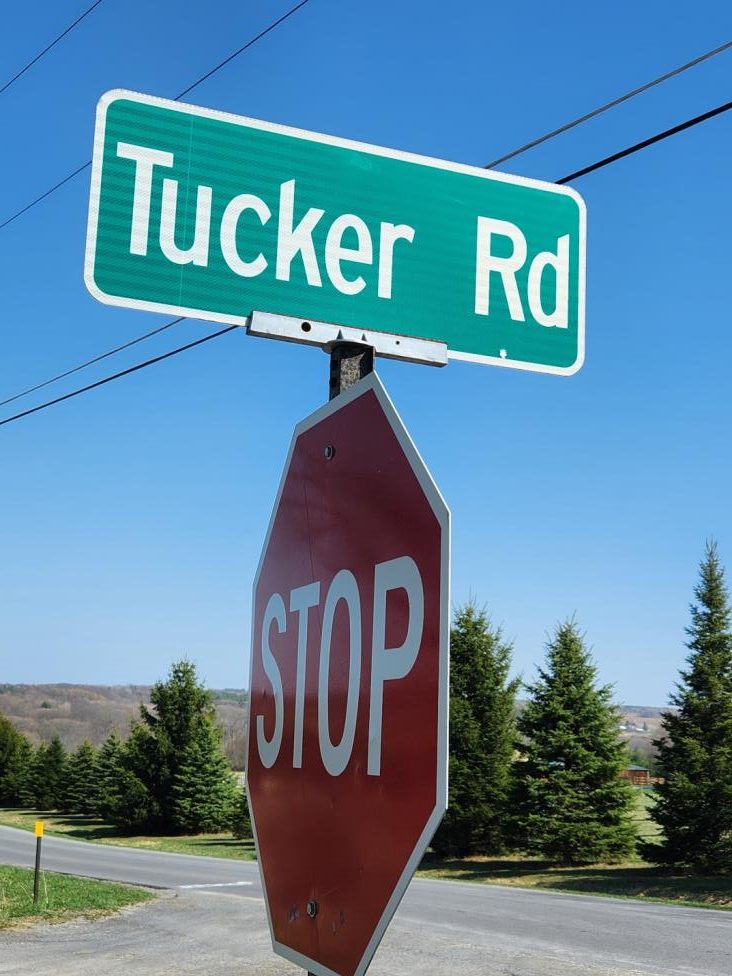
“Thinking about water usage,” the Supervisor continued, “Does everybody need to have a perfectly monoculture lawn and water it every day during a drought? What kind of regulations can we put in there for what I consider foolish water usage?”
Whoa! Regulations? Foolish water usage? What are we talking about here? One’s temped to let spontaneous comments like Redmond’s fly into outer space; never captured; never examined; never debated. But capture them, please. Supervisor Redmond is trading-in one Councilperson’s idea that would bridle irresponsible developers for a very different idea: that of a controlled society, one that bridles every one of us.
“We have to be able to share this water resource with the rest of the world,” Redmond argued. “And yes, it might harm us. We might not be able to wash our car or fill up our pool, and that might hurt. Climate Change is going to hurt. You can bet Climate Change is going to hurt. And you might not be around for it. But I bet my kids are going to be around for it, and it’s going to hurt.”
Hurt, it may. But what the Supervisor aspired for that night is not the Enfield that you know. It is not the Enfield that I know, nor want to know. It would be a different type of town. Yes, I want your shale-rock well to pour forth water. But I do not want to have to call the Town Supervisor or some Town Water Resource Officer on a Saturday morning just to gain permission to wash the dog. Nor do I want to plead before the Town Board in order to build a house that’s just a little bit larger than tiny.
“I do think that we need to deal with the housing crunch that New York State is going to face,” Redmond said, brushing aside my initiative on grounds it might stifle local housing growth. “And I don’t think that saying that, ‘It’s ours; we live here; and therefore, you can’t come in’—it’s very NIMBY to say that people can’t come here because they might affect our water. Well, they’re coming from places that don’t have water at all. They need water. “
Enfield’s Supervisor continued: “I don’t feel like we can be, ’These are our waters because we were here first.’ I don’t think that’s appropriate. Otherwise, we should give all of our land back to the Native Americans and walk away.”
I disagreed with the Supervisor’s assertion and called her on it.
“I think first and foremost we have to protect the interests of the people who live here,” I said. “And I know that sounds like being NIMBY, but I’m trying to be responsible. I’m not trying to say that nobody can come in here. But you can’t come in here and hurt your neighbor by drawing his well dry.”
“Enfield is not set up to have high-density subdivisions,” Planning Board Chair Dan Walker reminded us that night. “That’s just the way it is right now.”
“And if we wanted to spend $15-20 Million, we could probably get the infrastructure started to have some areas of higher density development,” Walker told us. “But that’s not what we want. We want to maintain the agricultural aspects of Enfield.”
And the Planning Board Chair’s observation—an observation likely shared by most of us in Enfield—deflates the argument that our town should become some wide-open refuge for the climate-displaced. Not only do we lack the infrastructure to support large-scale housing development. We don’t want countless Breezy Meadows-clones to gobble up what precious farmland we have left. We’re Enfield, not Levittown.
Yet, again, I circled back to the central issue I’d first raised: the issue of water.
“I think in places where you’ve got low-producing shale wells like this, you either go the route that I’ve proposed or you go the expensive route and bring a water pipe up from the standpipe down on Iradell and Van Dorn, and you bring public water in,” I said. “And you’re going to get some resistance from people saying, ‘I don’t want to pay the benefit charge for that.’ But I think you’ve got one choice or two, or you are going to have people who are scared to live here anymore because they’re worried their wells are going to run dry. And I hear that.”
Supervisor Redmond and I did most of the talking that January night. Councilperson Lemke commented some. Councilpersons Hinkle and Millspaugh stayed mostly on the sidelines. Perhaps they enjoyed the best vantage points to hear the back-and-forth.
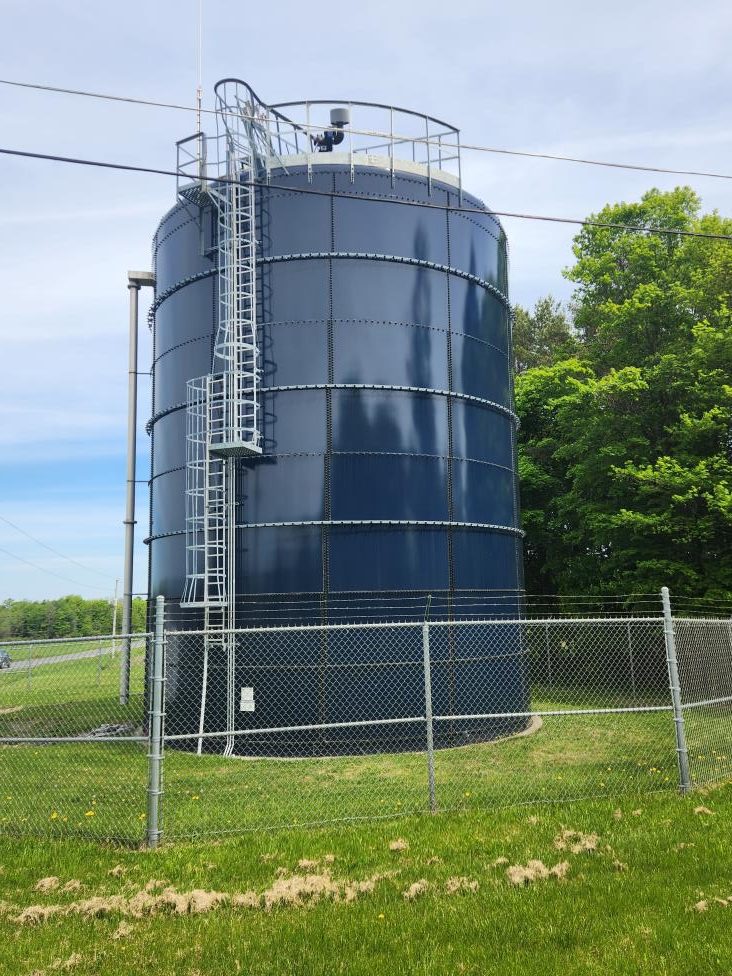
“We’ve got a fork in the road; which way we go in terms of these regulations,” I said. “Do we just more-or-less tidy up and pass and adopt what the Planning Board has revised and do minor changes? Or do we make major changes like I have suggested for the sake of argument, if nothing else?”
Reading my colleagues’ reaction that January evening, small-ball won the night.
“I would like to see these adopted mostly as they are right now,” Redmond concluded. “But I do think we need to continue this discussion.”
“We shouldn’t abandon the work that’s been done,” Lemke concurred. “We should move [the Planning Board’s draft] forward and adopt it because it’s better than where we are. And then we should build on that and look at all this other stuff. And that’s what amendments are for.”
Before we moved on toward adjournment, the Supervisor made it clear she thought my initiative—the subdivider-limiting “Right to Water,” while worthy on some level, was a leap much too far.
“I really can’t move on those right now,” Redmond said. No one else, other than me, disputed her.
Our Town Board will tackle another section of the draft Subdivision Regulations come February. I predict a more boring, less pointed discussion then. If nothing else, I’ll make it that way. I sense I’ve played my hand and more or less lost—again. Yet if a “Right to Water” for those in Enfield is “my baby,” and if you make the metaphor work, rest assured that tonight that baby does not sleep soundly. Why? Because trust me, there will be more Breezy Meadows. And your well cannot work miracles.
###

